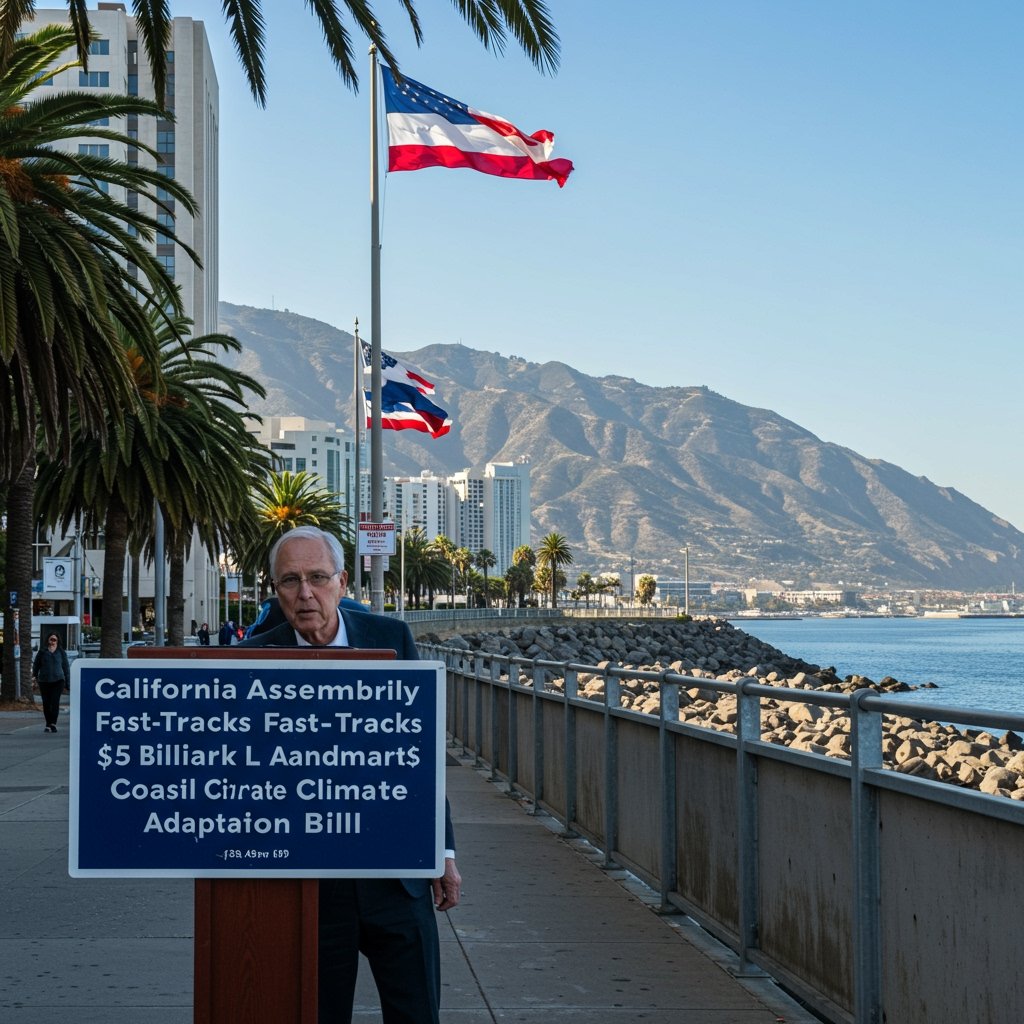California Legislature Accelerates Major Coastal Climate Funding Initiative
Sacramento, CA – The California State Assembly is demonstrating an urgent legislative pace in advancing a significant funding proposal aimed at bolstering the state’s resilience against the escalating impacts of climate change along its extensive coastline. Central to this effort is the rapid progression of AB 2030, officially titled the Coastal Adaptation and Resilience Act of 2025. This ambitious bill proposes an unprecedented $5 billion investment dedicated to climate change adaptation measures for California’s vulnerable coastal regions.
Sponsored by Assemblymember Lena Chen, the legislation represents a legislative acknowledgment of the critical threat posed by rising sea levels, coastal erosion, and increased storm intensity. If enacted, AB 2030 would unlock substantial funding for a diverse array of crucial projects designed to protect both natural ecosystems and human infrastructure. Proposed initiatives include significant upgrades to existing coastal infrastructure, large-scale ecological restoration efforts targeting sensitive habitats like wetlands and dunes, and direct support mechanisms for the vulnerable coastal communities disproportionately affected by climate impacts.
Legislative Progress and Committee Approval
The bill’s journey through the Assembly has been marked by a notable speed, signaling a strong legislative will to address coastal vulnerabilities head-on. AB 2030 recently cleared a key hurdle in the legislative process, successfully passing the Assembly Natural Resources Committee on February 14, 2025. The committee vote demonstrated solid support for the bill’s intent and proposed scale of investment, with the measure passing by a margin of 12-3.
The swift committee approval underscores the growing consensus among a significant portion of state legislators regarding the necessity of proactive and substantial investment in coastal adaptation. Proponents argue that delaying action will result in exponentially higher costs in the future, both economically and environmentally, as climate impacts intensify.
Detailed Funding Allocations and Program Structure
The proposed $5 billion funding structure outlined in AB 2030 includes specific allocations targeting areas identified as particularly vulnerable or critical for adaptation efforts. Among these, the bill earmarks $500 million specifically for projects within Monterey County. This significant allocation is intended to support local initiatives addressing pressing issues such as coastal erosion threatening infrastructure and the preservation of unique coastal ecosystems in the region.
Similarly, the legislation designates $700 million for initiatives within the San Diego-area. This funding is slated for adaptation projects along the Southern California coast, which faces distinct challenges related to sea-level rise impacts on dense urban development, military installations, and vital coastal habitats.
Beyond these specific regional allocations, a substantial portion of the total $5 billion is intended to power a statewide grant program. This program would allow cities, counties, special districts, non-profit organizations, and other eligible entities across California’s entire coastline to apply for funding for locally relevant adaptation projects. The grant program is expected to foster a wide range of innovative solutions, from building seawalls and elevating structures to restoring kelp forests and developing community-based resilience plans.
Stakeholder Reactions and Ongoing Debate
The rapid advancement of AB 2030 has elicited varied responses from key stakeholders. Environmental advocacy groups have largely lauded the bill and its proposed funding level, emphasizing the urgency of the climate crisis facing the coast. The Save Our Shores Coalition, a prominent environmental organization focused on coastal conservation, expressed strong support for the legislation, hailing it as a necessary and long-overdue step towards building resilience and protecting vital coastal resources for future generations.
However, the bill has not been met with universal acclaim. Some industry organizations have voiced concerns regarding the potential economic ramifications of the legislation. These concerns often center on the potential impacts on coastal development, land use regulations, and the sources identified to fund the $5 billion investment. Questions have been raised about the long-term economic feasibility and potential effects on specific sectors dependent on coastal activities.
As AB 2030 moves forward, these diverse perspectives are expected to feature prominently in the upcoming floor debate within the Assembly. Legislators will need to weigh the urgent environmental imperative against potential economic considerations and explore mechanisms to address stakeholder concerns while maintaining the bill’s core objective of robust coastal adaptation.
Path Forward to Assembly Floor
With the successful passage through the Assembly Natural Resources Committee, AB 2030 is now poised for consideration by the full California State Assembly. The floor debate will provide an opportunity for all members to discuss the bill’s provisions, propose amendments, and ultimately cast their votes. The outcome of the Assembly vote will determine whether this landmark $5 billion funding proposal continues its journey through the legislative process towards potential enactment, shaping California’s approach to coastal climate resilience for decades to come.



















